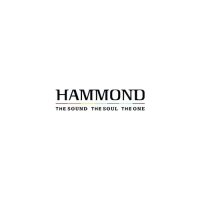56
*#1 $OM%OM$2OMOwner’s Manual
LESLIE
WHAT IS THE LESLIE EFFECT?
In the Leslie speakers, an amplifier and two rotors are incorpo-
rated, the “Horn Rotor” for the treble and the “Bass Rotor” for the
bass.
The Horn Rotor uses a horn driver, and a Woofer speaker (usually
a 15”) fires into the Bass rotor. Each is driven by a speed con-
trolled motor. The motion causes the “Doppler effect” that creates
the distinctive Leslie sound.
There are also models that have not only rotors but stationary speak-
ers.
The circuit that sends the sound to the rotors is called “Rotary Chan-
nel” and the stationary speaker circuit is called “Stationary Chan-
nel”.
The built-in “Virtual” Leslie simulates the sound of the Mechanical
speaker. The best effect is obtained when connected to a stereo-
phonic amp or sound system.
When a Leslie Speaker is connected, the sound of this organ is
sent only to the rotary channel, and the sound input from the LINE
IN jack is sent to the stationary channel.
[CHORALE]
Rotors will turn slowly, producing an effect suitable for use with hymns, classical style
music and some slower songs.
[STOP]
Rotors do not turn. Animation can be provided by using Vibrato and Chorus.
[TREMOLO]
Rotors will speed up and rotate fast to produce a rich full sound.
NOTE: Some Leslie Speakers will not recognize the “stop” position.
NOTE: You can finely set the charactics of the built-in Leslie effect etc. (P. 84)
The Leslie Speaker produces its unique effect by utilizing rotors that give tremolo,
vibrato and motion to the sound.
The Leslie Speaker is controlled by the Leslie Speed Switch. If no Leslie Speaker is
connected, this switch controls the built-in Leslie Effect.

